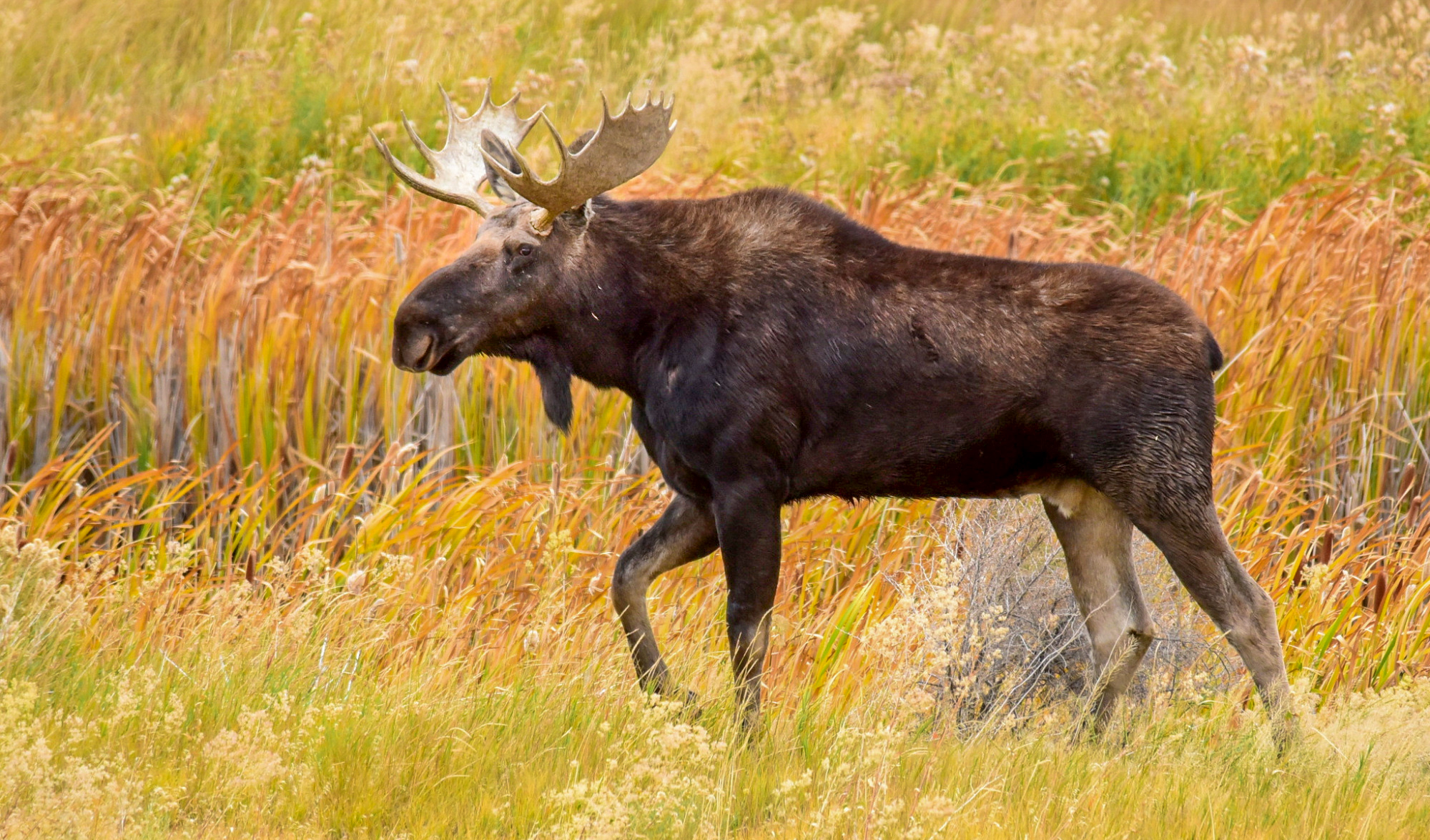A moose carcass recently found in Carbon County, Wyoming died from anthrax, the Wyoming Game and Fish Department confirmed Tuesday. Now state agencies are warning hunters, ranchers, and residents in the south-central part of the state to avoid approaching dead wildlife in the area.
Test results from the Wyoming State Veterinary Laboratory determined that the naturally-occurring bacteria killed the large ungulate, marking the first documented instance since 1956 that Wyoming wildlife has died from anthrax. It’s unclear whether the moose was a bull, a cow, or a calf — WGFD has not specified.
The Wyoming Livestock Board also confirmed that multiple beef herds in the area near Elk Mountain have also been affected by the disease but did not specify how many cows had died. This is the first time since 1970 that the disease has impacted livestock in the Equality State. Clinical signs of anthrax in livestock, the organization noted, include sudden death, weakness, staggering, difficulty breathing, fever, and bloody diarrhea.
Anthrax outbreaks occur among wild and domestic animals when those animals inhale or ingest large concentrations of spores. The bacteria, B anthracis, occurs naturally in soils and can emerge in high quantities after those soils have been disturbed in some way, especially after floods. The disease is most common in herbivores whose diets involve heavy grazing and browsing.
“Disturbance is common in summer months when conditions may alternate between rain and hot, dry weather, allowing spores to be released from contaminated soil and ingested by livestock or wildlife,” reports WGFD.
These outbreaks can survive in the environment for many years, making them extremely hard to quash. Anthrax spores tend to go dormant in the cold months and become active again in warmer weather. Humans and livestock can be vaccinated against the condition, although no vaccine currently exists for pets. In cases of anthrax in domestic livestock, experts recommend burning the carcasses, the ground where they grazed, and any bedding, manure, enclosures, or otherwise potentially contaminated areas. Obviously, this level of response is nearly impossible for wildlife outbreaks, which makes them a huge challenge to wrangle.
Read Next: Are Chronic Wasting Disease Fears Making People Quit Deer Hunting?
Humans can contract anthrax through contaminated animals or animal products, according to the Centers for Disease Control and Prevention. As archery season gets underway in Wyoming, that means hunters going out in the Elk Mountain area will need to exercise extra caution. Livestock producers should also be on the lookout, experts warn.
“Early signs of anthrax can include respiratory difficulty and disorientation,” WGFD writes. “After death, infected animals tend to bloat very quickly and you may see black, tarry blood coming out of natural body openings … Do not pick up roadkill or fresh deadheads in the Elk Mountain area. Keep dogs, horses and other pets away from animal carcasses you come across in the field.”
Read the full article here




